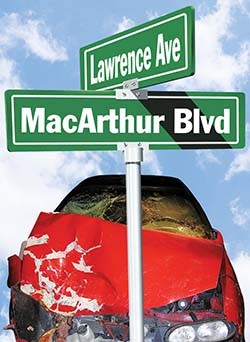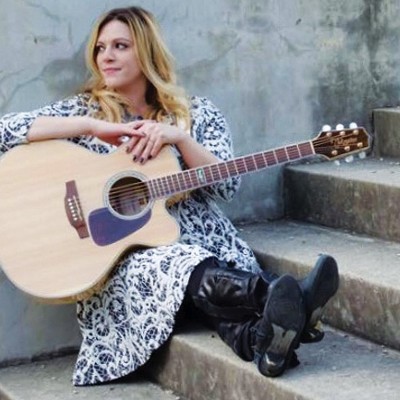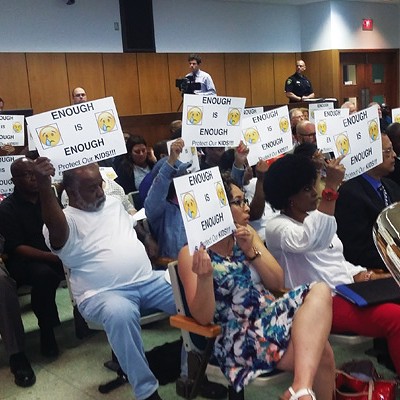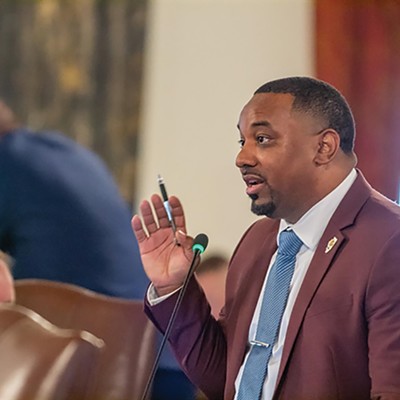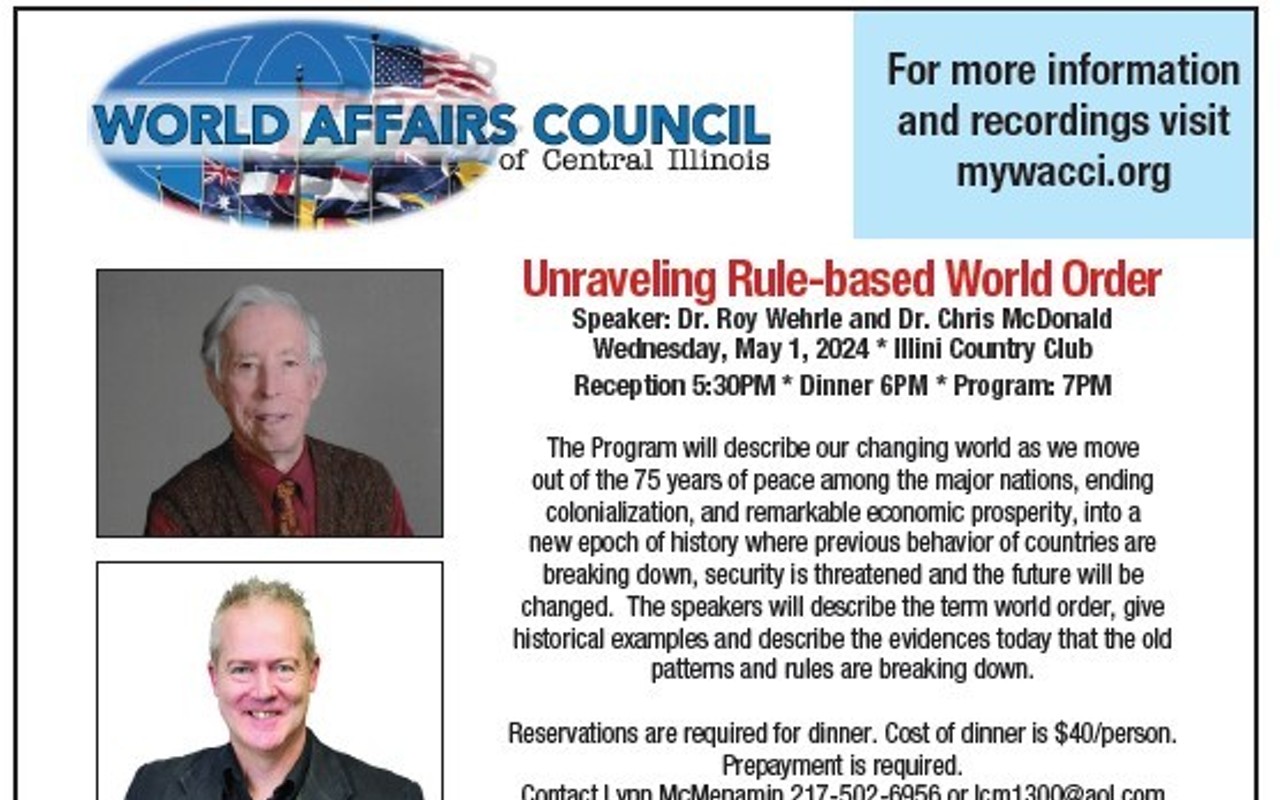Lanes on Lawrence?
City eyes turn lanes at two busy intersections as neighborhood hits the brakes, urging caution
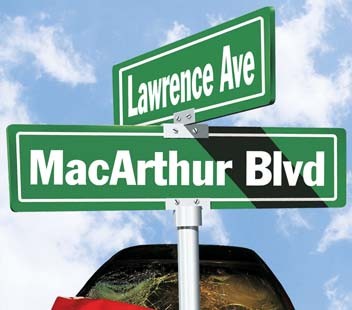
[
{
"name": "Air - MedRect Combo - Inline Content 1",
"component": "11490391",
"insertPoint": "3",
"requiredCountToDisplay": "1",
"parentWrapperClass": "fdn-ads-inline-content-block"
},{
"name": "Air - MedRect Combo - Inline Content 2",
"component": "11490392",
"insertPoint": "7",
"requiredCountToDisplay": "5",
"parentWrapperClass": "fdn-ads-inline-content-block"
},{
"name": "Air - MedRect Combo - Inline Content 3",
"component": "11490393",
"insertPoint": "12",
"requiredCountToDisplay": "9",
"parentWrapperClass": "fdn-ads-inline-content-block"
}
]
The City of Springfield is considering widening two accident-prone intersections and adding turn lanes, but nearby residents may put up a fight.
In April, the city submitted a pair of grant applications to the Illinois Department of Transportation, asking for $1.2 million to study options for making the intersections of Lawrence Avenue at MacArthur Boulevard and Walnut Street safer. Mark Mahoney, director of Public Works for the city, says the two intersections have the most accidents of any over which the City of Springfield has jurisdiction. Other intersections within Springfield have more accidents, but are either under state control or are jointly overseen by the city and state. The three streets that make up the two intersections are each major thoroughfares for workers during mornings and evenings during the week.
Mahoney recently attended a meeting of the Historic West Side Neighborhood Association to talk about the grant applications. Some residents were left with the impression that the city has already made up its mind to widen the two intersections, which Mahoney says isn’t the case.
“What we’re talking about is really looking at all the options,” Mahoney said. “Even if the city had decided, there’s a whole process that has to be done.”
Still, Kurt DeWeese, vice president of the Historic West Side Neighborhood Association, has some concerns. He says the association isn’t necessarily opposed to the idea of adding turn lanes, but he and some other residents near the intersections aren’t convinced that adding turn lanes will help reduce crashes. Many of the crashes are caused by drivers speeding up to beat stoplights, then hitting other cars attempting to turn left across the oncoming lanes, DeWeese contends.
Springfield attorney Tom Immel lives at the intersection of Walnut Street and Lawrence Avenue. His large, manicured house was built in 1896 and received the Mayor’s Historic Preservation Award in 2005. Immel worries that if his intersection is expanded to include turn lanes, much of his side yard and the four large trees lining Lawrence Avenue will have to go. That would put the roadway within a few feet of his house, which he says would destabilize the foundation and “destroy the value of the home.”
Immel wrote a letter to IDOT safety engineer Priscilla Tobias, urging her to deny the city’s grant requests and warning the litigation would result from the expansion plan.
“The city will simply have to buy [the property] and pay our relocation costs; and this is just one of the several properties involved in their ‘plans,’ ” Immel wrote. “Their … application invites your department to join that party and the probable litigation it will involve. As a serious manager of grant funds, you’ll probably want to decline the city’s invitation.”
The MacArthur intersection saw an average of 25.2 crashes per year from 2007 to 2011, according to the city’s grant application. The Walnut intersection saw an average of 13.4 crashes per year over the same period. Most of the crashes at both intersections have caused only minor injuries, and none have been fatal during that time.
The majority of crashes at both intersections happen during daylight, when the pavement is dry and no visibility impairments like fog or rain are present, according to crash data from IDOT.
DeWeese recalls a similar situation from years ago, when Springfield still had a commission form of government. The roads commissioner at the time suggested widening MacArthur Boulevard for most of its length, DeWeese said, which caused many homeowners to put their houses up for sale. That’s when several of the houses were purchased by landlords and turned into rental properties, a condition which still exists.
Mahoney, the public works director, says there will be public meetings allowing for neighborhood input before the city moves forward with any plan. He says nothing will happen until the city finds out whether its grant applications were approved, which is supposed to be this month.
Despite the bad reputation of the Lawrence intersections at MacArthur and Walnut, DeWeese isn’t sure anything needs to happen at all.
“This is not a 24/7 problem; it’s a rush-hour problem,” he said. “Rarely do people have to wait through two light changes. In comparison to other areas, where traffic literally comes to a halt at times, we’re not sure we have a problem. It’s just a matter of peoples’ patience and expectations.”
Contact Patrick Yeagle at [email protected].
In April, the city submitted a pair of grant applications to the Illinois Department of Transportation, asking for $1.2 million to study options for making the intersections of Lawrence Avenue at MacArthur Boulevard and Walnut Street safer. Mark Mahoney, director of Public Works for the city, says the two intersections have the most accidents of any over which the City of Springfield has jurisdiction. Other intersections within Springfield have more accidents, but are either under state control or are jointly overseen by the city and state. The three streets that make up the two intersections are each major thoroughfares for workers during mornings and evenings during the week.
Mahoney recently attended a meeting of the Historic West Side Neighborhood Association to talk about the grant applications. Some residents were left with the impression that the city has already made up its mind to widen the two intersections, which Mahoney says isn’t the case.
“What we’re talking about is really looking at all the options,” Mahoney said. “Even if the city had decided, there’s a whole process that has to be done.”
Still, Kurt DeWeese, vice president of the Historic West Side Neighborhood Association, has some concerns. He says the association isn’t necessarily opposed to the idea of adding turn lanes, but he and some other residents near the intersections aren’t convinced that adding turn lanes will help reduce crashes. Many of the crashes are caused by drivers speeding up to beat stoplights, then hitting other cars attempting to turn left across the oncoming lanes, DeWeese contends.
Springfield attorney Tom Immel lives at the intersection of Walnut Street and Lawrence Avenue. His large, manicured house was built in 1896 and received the Mayor’s Historic Preservation Award in 2005. Immel worries that if his intersection is expanded to include turn lanes, much of his side yard and the four large trees lining Lawrence Avenue will have to go. That would put the roadway within a few feet of his house, which he says would destabilize the foundation and “destroy the value of the home.”
Immel wrote a letter to IDOT safety engineer Priscilla Tobias, urging her to deny the city’s grant requests and warning the litigation would result from the expansion plan.
“The city will simply have to buy [the property] and pay our relocation costs; and this is just one of the several properties involved in their ‘plans,’ ” Immel wrote. “Their … application invites your department to join that party and the probable litigation it will involve. As a serious manager of grant funds, you’ll probably want to decline the city’s invitation.”
The MacArthur intersection saw an average of 25.2 crashes per year from 2007 to 2011, according to the city’s grant application. The Walnut intersection saw an average of 13.4 crashes per year over the same period. Most of the crashes at both intersections have caused only minor injuries, and none have been fatal during that time.
The majority of crashes at both intersections happen during daylight, when the pavement is dry and no visibility impairments like fog or rain are present, according to crash data from IDOT.
DeWeese recalls a similar situation from years ago, when Springfield still had a commission form of government. The roads commissioner at the time suggested widening MacArthur Boulevard for most of its length, DeWeese said, which caused many homeowners to put their houses up for sale. That’s when several of the houses were purchased by landlords and turned into rental properties, a condition which still exists.
Mahoney, the public works director, says there will be public meetings allowing for neighborhood input before the city moves forward with any plan. He says nothing will happen until the city finds out whether its grant applications were approved, which is supposed to be this month.
Despite the bad reputation of the Lawrence intersections at MacArthur and Walnut, DeWeese isn’t sure anything needs to happen at all.
“This is not a 24/7 problem; it’s a rush-hour problem,” he said. “Rarely do people have to wait through two light changes. In comparison to other areas, where traffic literally comes to a halt at times, we’re not sure we have a problem. It’s just a matter of peoples’ patience and expectations.”
Contact Patrick Yeagle at [email protected].
Illinois Times has provided readers with independent journalism for almost 50 years, from news and politics to arts and culture.
Your support will help cover the costs of editorial content published each week. Without local news organizations, we would be less informed about the issues that affect our community..
Got something to say?
Send a letter to the editor and we'll publish your feedback in print!

